Anyone who has heard of Thailand has likely heard of Phuket island, and I am sure, most of my readers have actually been there. No surprise – Phuket has been Thailand’s premier and most popular destination for decades. Great beaches, famous Thai hospitality, affordable prices and plentiful entertainment options have deservedly made it the gem of already gigantic Thai tourism industry.
The island of Phu Quoc in the south of Vietnam is somewhat less famous, but that is rapidly changing. With charter flights landing daily in its new international airport, more and more foreign tourists choose this up-and-coming tropical isle as their choice of a vacation spot.
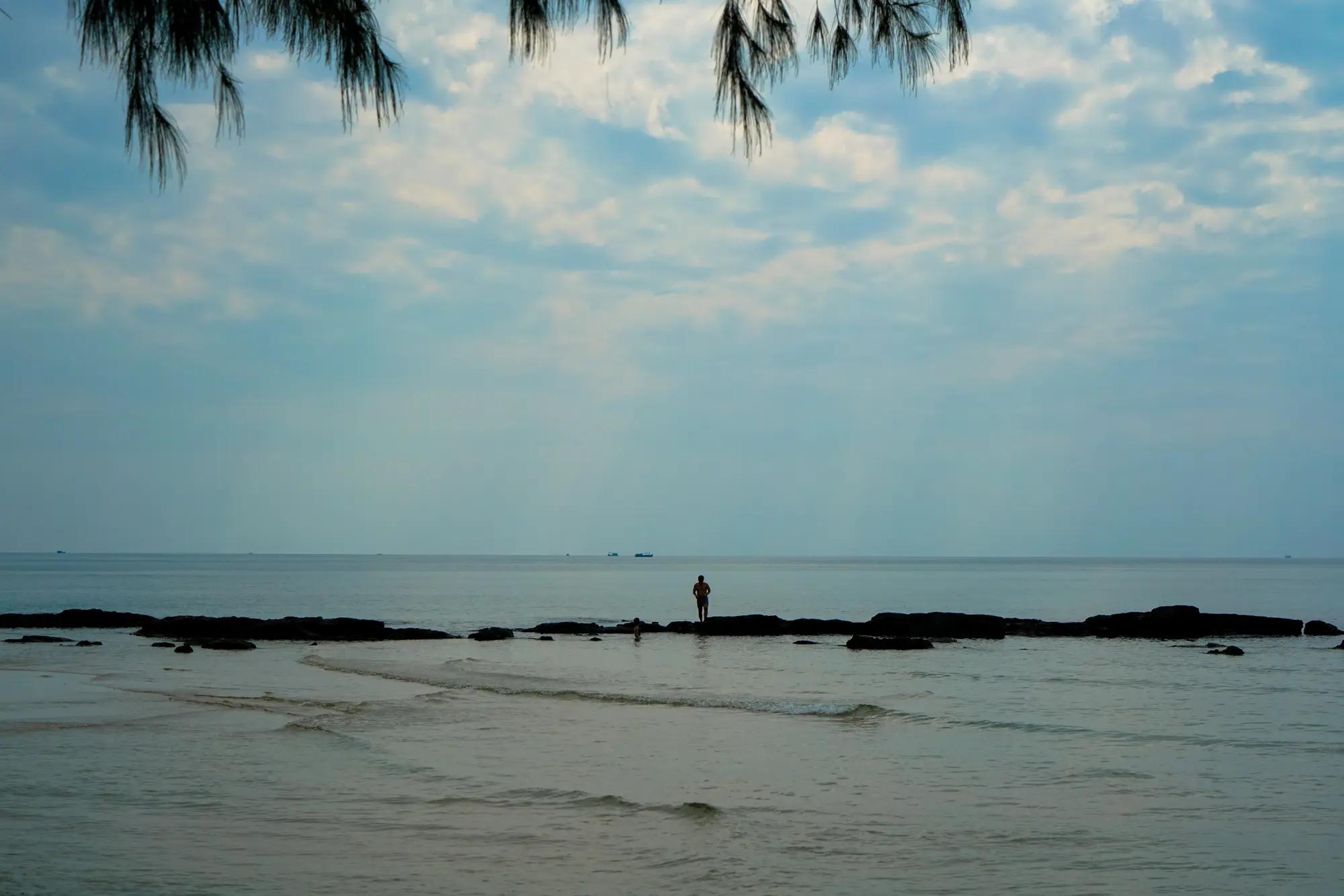
What’s curious is that both islands are not only the largest in their respective countries, they are also almost identical in size: about 222 square miles each! Some might still say they are too different to compare, but I have recently spent some time on each of the islands and can attest that they are actually quite comparable to each other. So if you are deciding where to go on your next vacation or are just curious about one, the other or both, you’ve come to the right place.
Getting There
Phuket’s international airport is second only to Bangkok’s in terms of passenger numbers for Thailand. Situated in the north of the island, it takes in numerous flights from around the world every day. Arrivals are quick, with visa-free entry for most nations. At the airport, you can easily obtain a cheap SIM card for your smart phone, and transportation options for anywhere in the island are plentiful, including a frequent public bus. What’s more, you can drive or take a bus to Phuket from the rest of Thailand via the connecting bridge.
Phu Quoc’s new airport in the middle part of the island is almost as big and impressive as that of Phuket. However, the air traffic for now is much sparser. The scheduled flights arrive mostly from Ho Chi Minh City and Hanoi; however, there are lots of chartered flights from Europe and elsewhere in Asia that arrive daily during the tourism season (November to March). As of recent, tourists visiting Phu Quoc are granted a visa waiver for Vietnam, so that’s a big improvement. However, you would still need a visa if you want to visit elsewhere in the country. Getting away from the airport, you are pretty much limited to overpriced taxis. However, just like in Phuket, hiring a scooter is ideal for getting around the island.
There are no land connections to Phu Quoc, but there is a ferry link between the island and the mainland taking between 1.5 and 2.5 hours depending on the boat.
All in all, the accessibility edge goes to Phuket, and that’s not surprising, given its popularity. But that is not to say Phu Quoc is difficult to get to. It does help if you are already in Vietnam, though.
Infrastructure and Development
This is the area of the biggest difference between the two islands – for now.
First, let’s start with population comparison. As of 2015, there were over 380,000 people in Phuket. Add to that well over 100,000 expatriates and tens of thousands of tourists at any given time, and you are pushing to close to a million. That’s a lot of people for a small island! With those numbers came major development. The road that goes along the island’s west coast seems like an endless urban or suburban development (and a major traffic jam), and whatever was still empty just a couple of years ago is being rapidly built up. Real estate business is booming. Even the less touristy east coast of the island is now bustling with hotels and resorts. Basically, almost every suitable land parcel in Phuket has been developed, or is being developed as we speak. Almost is a key word, and we will get to that point further on as we talk about the beaches.
Phu Quoc has just over 100,000 people (as of 2012), and both expats and tourist numbers are much lower. Unfortunately (or fortunately, depending on whom you ask), development projects have taken firm roots on the island. Sure, it resulted in very decent roads all around the island, but also in numerous mega-resort construction sites scattered around the Phu Quoc. Some have been completed, some seem to be in a state of hibernation, for various economic reasons. With the corruption levels in Vietnam at a higher level than in Thailand and also at much cheaper costs, developers have scooped up lots of prime beachfront properties around Phu Quoc.
But for another few years at least, Phu Quoc is a far cry from Phuket in terms of overdevelopment. In-between fancy resorts, there are plenty of fishing villages living the same way as they did for decades. The island’s interior is still home to pepper farms and old-growth jungle. While Phuket’s main roads are incredibly congested, driving in Phu Quoc is a breeze – some of the brand new roads have hardly any car traffic at all.
So here the advantage goes to Phu Quoc – visit it before it becomes the new Phuket, which it seems to aspire to become.
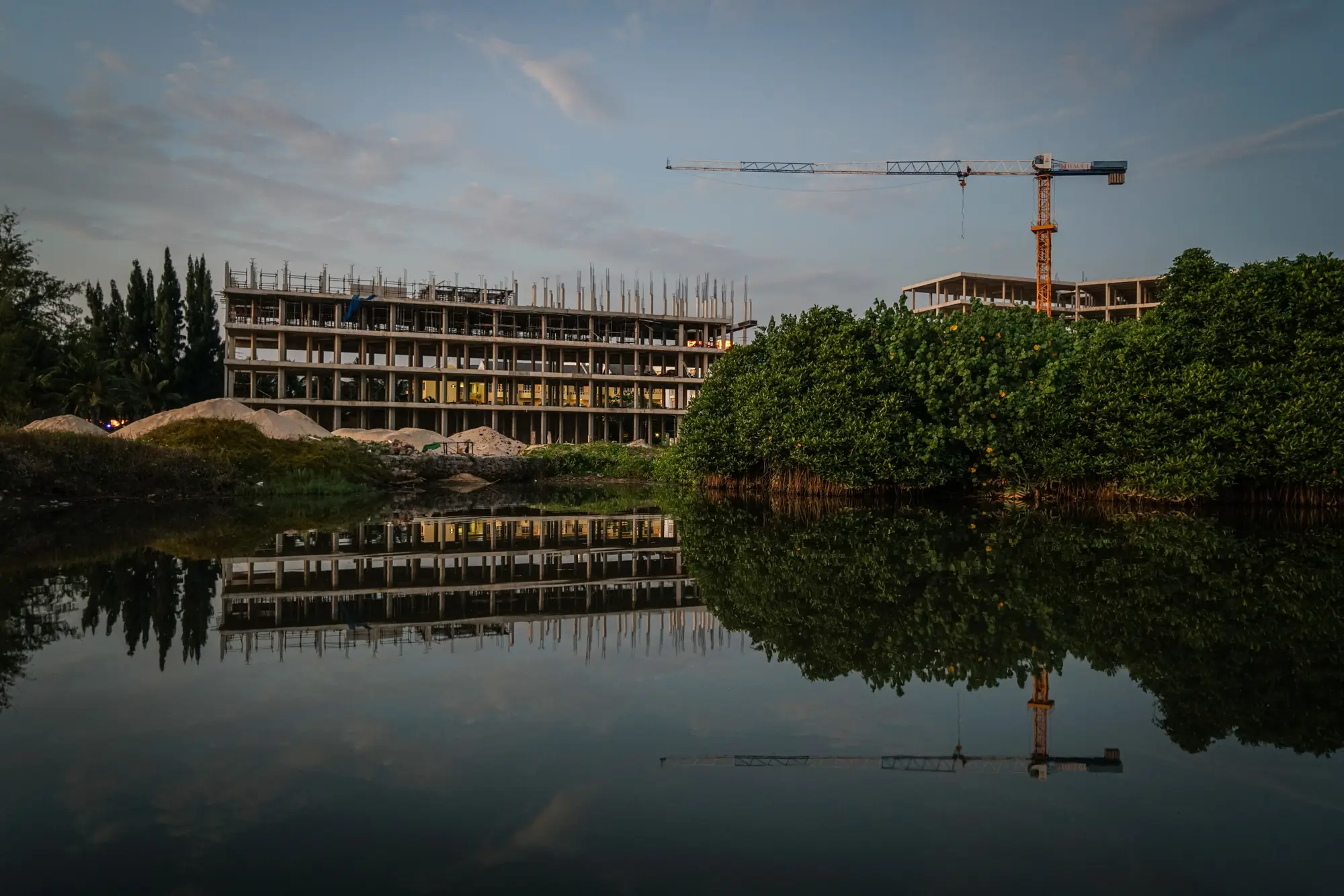
Beaches
Let’s face it, without the beaches, there’d be no Phuket or Phu Quoc as we know them. None of the tourist crowds would simply be on either island if it wasn’t for their main seaside appeal. But how do they compare?
Beaches in Phuket are truly world class, both in terms of beauty and cleanliness. But they are also quite different. For some reason, the most famous beach in Phuket is Patong. That is mind boggling: to me, it is one of the worst beaches on the island. It has lots of rocky bits, it is extremely crowded, the water is shallow, and it is right in the city of Patong. But perhaps that is the appeal to many, especially those to again, for inexplicable reason, choose to stay in the noisy and polluted Patong on their trip to Phuket.
Those with a bit of sense of direction and adventure will choose other beaches, such as Kata, Karon, Kamala (pictured at the header) or Surin – all fine choices, especially Surin, which is one of my personal favourites in Phuket. It has great sand, nice waves and clean enough water for some snorkeling by the rocks. Another popular yet beautiful spot is Yanui beach, with an uninhabited island surrounded by beautiful coral reef within a swimmable distance.
Those who are truly in the know, however, will seek out much less crowded beaches further north, towards the airport, such as Naithon and Sirinat, which is located in the national park. My favourite spot in the area, however, is the so-called Banana Beach, accessible via a short path through the jungle. It is a small yet absolutely gorgeous beach, the one that will really make you understand why you came to Phuket.
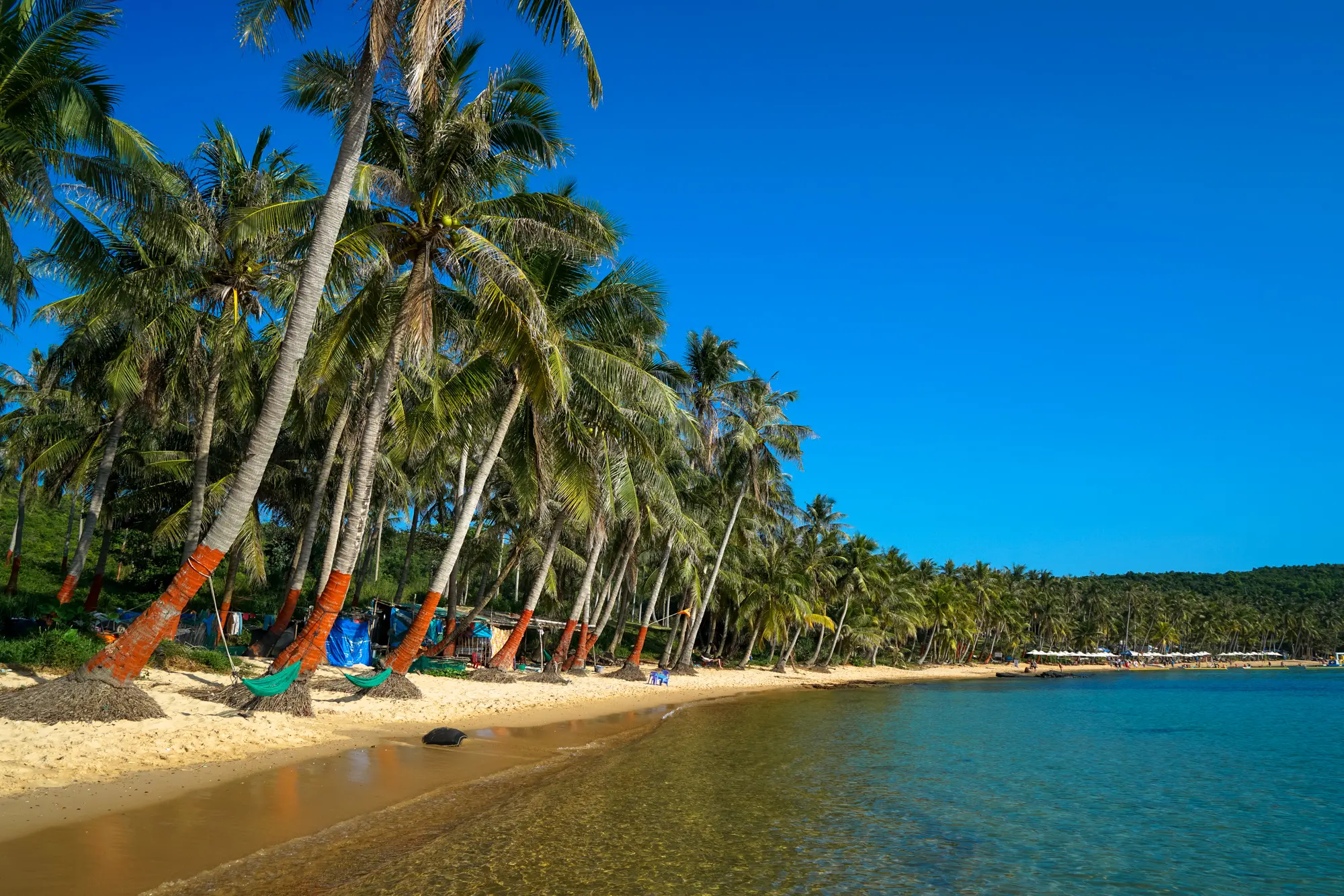
Now, to Phu Quoc. The island holds its own in terms of beaches, too; some spotless, some, unlike in Thailand, are very polluted with plastic rubbish. Due to the flatter terrain than in Phuket, you are not going to see beaches fringed by dramatic rocks in Phu Quoc. But that is not to say they are not pretty – instead of rocks, they are often lined by coconut palm trees, and there is lots of white sand beaches so favoured by many tourists.
Long Beach in Phu Quoc is probably the most popular. Here you will find most hotels and resorts. It’s a fine beach – not too wide, not too narrow, very walkable and offering great sunset views. And it’s long, hence the name. The water, however, is murkier than in Phuket for the most part, although it might be seasonal. Another popular beach in Phu Quoc is called Sao, and it is a stunner: sugar-white powdery sand, gentle waves, beach-side restaurants and even a few swings set in the water for popular picture taking. Of course, this idyllic setting draws large crowds, especially in the afternoon. I counted no less than 20 tourist buses there one time, mostly carrying Chinese groups. Plan your trip accordingly, and if you go by motorbike, do not turn left at the approach to the beach despite the signs – it is a private road and they will charge exorbitant parking fees. Continue straight, and you will find yourself at the same beach but with free parking.
Private access roads is a huge problem for beaches in Phu Quoc. Many a great beach is now accessible only to tourists paying top buck for staying at these fancy resorts such as Bai Khem, once voted one of the world’s top 50 beaches but now swallowed up by a JW Marriot resort with no access to others (shame on you, Marriott!)
Fortunately, with a little research, you can find such gems as Ong Lang, Ganh Dau and Rach Vem beaches, with little or no development. Mind you, the waters around Phu Quoc are quite shallow and there is not much to see under water, so if you are like me and swimming and snorkeling is the most important part of a beach to you, be aware. But if you have small kids with you or just like to lounge, then you will find a good few good spots on Phu Quoc.
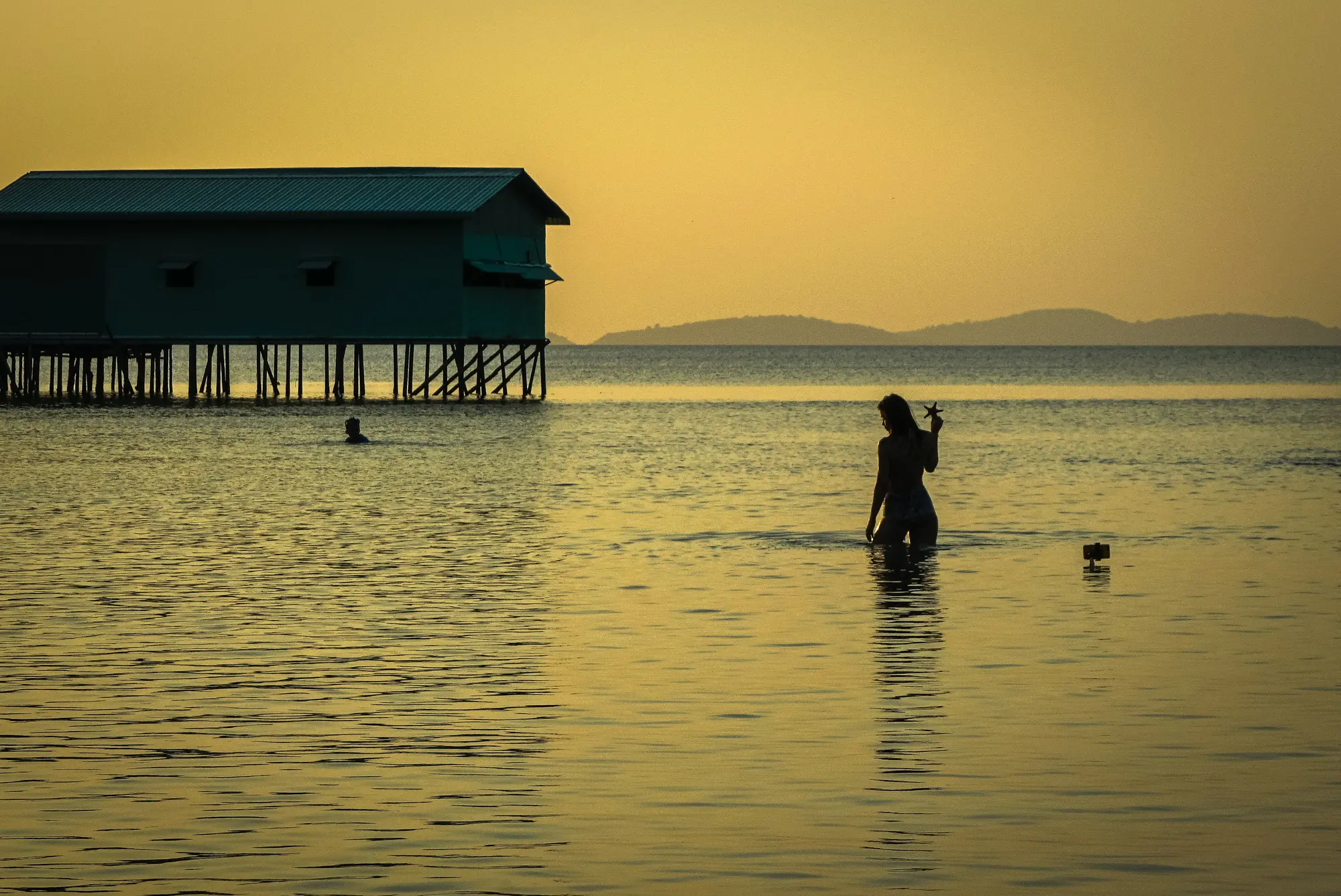
Still, when it comes to beach beauty and overall quality and choice, while Phu Quoc is no slouch, the edge goes to Phuket. There’s a reason people have been flocking to that island in millions over the decades.
Nature Activities
Sooner or later, we all get tired of beaching and want something else to do on our holiday, preferably outside. And Phuket shines here. To the north-east of the main island, there is a Phang Nga Bay, peppered with small rocky, almost vertical rocks and numerous islands. Along with Ha Long Bay in Vietnam and El Nido in Palawan, it one of the most beautiful bays in Asia. A boat tour here is a must, and I say that as a someone who generally detests big guided tours.
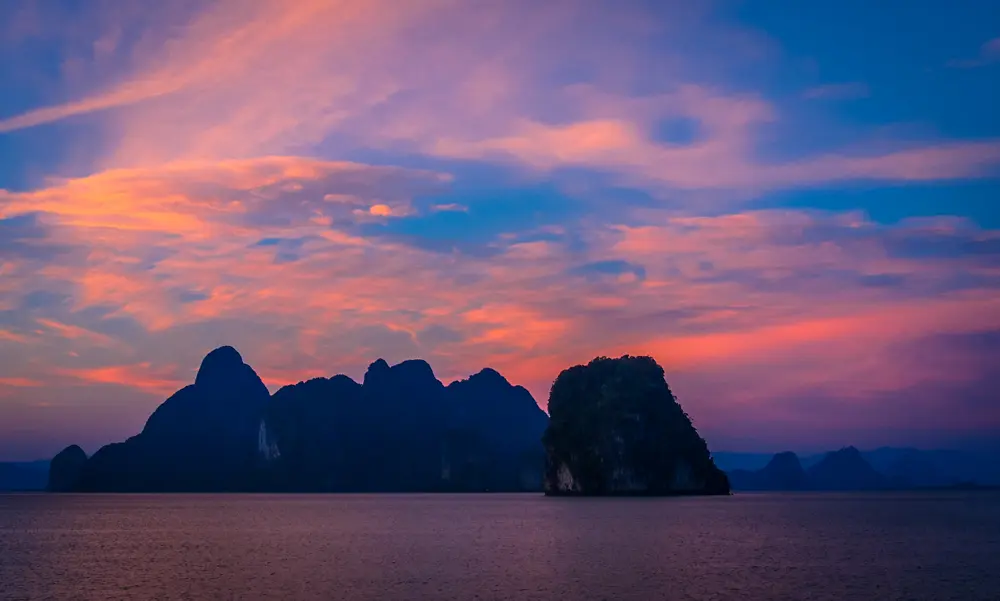
Phuket has a rugged mountainous terrain (much more so than Phu Quoc, even though its maximum elevation is actually higher than Phuket’s), so there is not much to do in the interior bar a few waterfalls. But underwater, Phuket shines. Mind you, it is far from the best diving destination in the world – I would call it average at best – but there are decent dive sites around the island, and as already mentioned, good snorkeling is possible around beaches’ rocky edges.

Phu Quoc pales in comparison to Phuket with regards of underwater scenery. While there is scuba diving here, it is not as good as in parts of continental Vietnam such as Nha Trang, which is to say, it’s probably not worth your time and money unless you are a beginner and just want to get some dives under your belt. A lot of it is because of overfishing, which not only killed off all large marine life in South Vietnam but also destroyed coral reefs in process. Whether Vietnamese government will have enough foresight to restore and protect the waters around Phu Quoc, remains to be seen.
And since there is also not much to do in Phu Quoc’s interior, I would give the nature activities’ edge to Phuket.
Bang for the Buck
Both Vietnam and Thailand are known as excellent budget destinations, but how to their beach islands compare in that regard?
Both islands are very affordable, although compared to mainland prices, they are more expensive. You can spend hundreds of dollars for your accommodation on either one of them, but I don’t see the point. You are here to enjoy the sea and the sand, not your hotel pool and amenities. But hey, maybe it’s just me. And if you are that kind of a tourist, Phuket will have way more choices where to splurge.
When it comes to the budget end of the spectrum, Phuket is slightly pricier nowadays. That’s a change from about 5 years ago, when you could easily find a lovely hotel for around $15/night. Now, you’d have to pay well over $20, and it won’t be on the beach. In Phu Quoc, you can still find accommodation for under $20 and walking distance to a beach, but generally (and this is true for Vietnam as a whole), the quality for similarly-priced hotels will be slightly worse here than in Thailand. Single guys, keep in mind that while in Thailand you can bring a girl to your room without issues, in Vietnam it is frowned upon by many hotels.
On each island, you would want to rent a motorbike for getting around. In Phuket, the going rate has also gone up but is still very cheap at $5/day, while in Vietnam it is a couple of dollars more, usually $6.50-7/day. Not a huge difference unless you stay for weeks.
Food in Phu Quoc is still quite cheap if you shop around. In Phuket, due to high numbers of well-to-do Chinese and Russian tourists, prices, especially for seafood, have risen drastically. A stall-keeper won’t even bargain with you. For a whole grilled fish, be prepared to pay minimum $10. In Phu Quoc, you can get a lovely fish, even a red snapper, for $7-8. I personally find Vietnamese food more diverse and generally healthier than Thai, but that’s strictly subjective, of course. Both cuisines are heavy on the meat, so these islands are great for going on pescaterian diets. Should you feel like something else, both islands offer a variety of restaurants of many different cuisines. In the town of Duong Dong in Phu Quoc as well as in the streets of Patong and Phuket Town, there are plenty of cheap street food choices.
Prices for other services, such as tours, massages, drinks at bars, are pretty comparable between the islands, so overall, this category is a draw.
Enterntainment
Patong city in Phuket is unquestionably one of South East Asia’s most notorious party centres. Most entertainment here revolves around girl bars on Bangla Road. If that’s your cup of tea, then by all means, that is your place. Nearby villages such as Kamala, also have their share of bars, although nowhere near the scene of Patong which is truly the town that never sleeps. So once again, be wise about your choice of accommodation. Even if you enjoy a ping-pong show or two, there’ll be time when you’ll need some peace and quiet, so choose your hotel wisely, and preferably, outside of Patong.
Phu Quoc has nowhere near the party scene of Phuket. But it’s not completely dead, either. Long Beach is lined with bars – some quaint and low-key, some posh and with DJs. The scene is rather dead during the week, but does come alive on weekends.
Although the scene in Phuket outside of Patong is actually comparable to that of Phu Quoc, the entertainment win goes to Phuket by a high margin.
Photography
Finally, I cannot miss the category that is one of the most important ones to me. How do these islands compare from a photographer’s point of view?
Well, as I already mentioned, the nature in Phuket is more spectacular than in Phu Quoc, mostly due to Phang Nga Bay. Phanga also has some interesting floating Muslim villages, so there’s the street and people photography here too. Not to mention Phuket Town, with its bustling market.
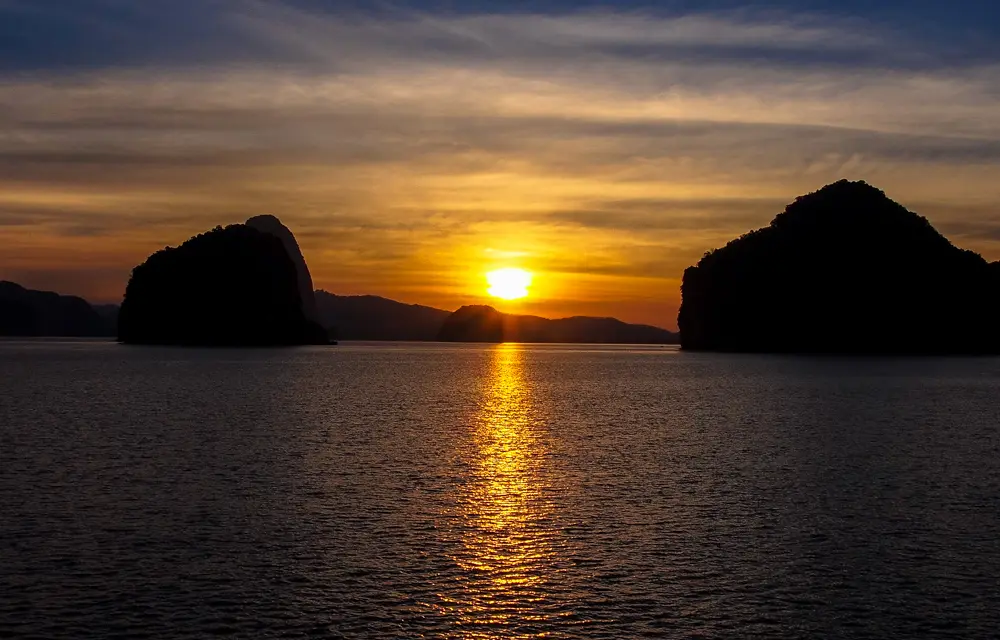
In Phu Quoc, however, the street life is far livelier and more authentic-looking than in Phuket. Fishing boats in the rivers, wooden shacks of fishmongers, children running around and women hustling the markets in their iconic “non-la” hats – all that makes street photography in Vietnam, and in Phu Quoc, very rewarding.
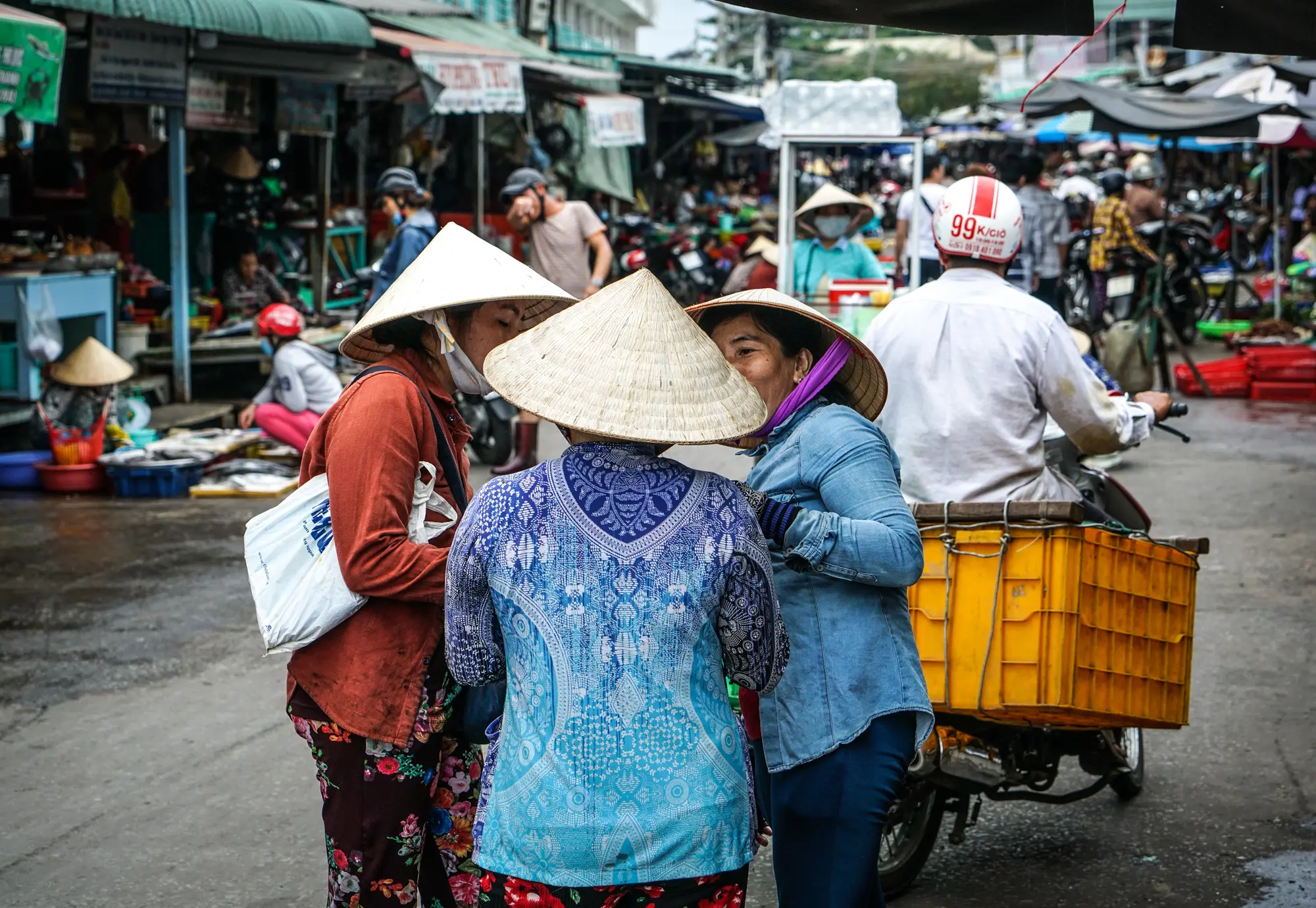
Both islands offer unparalleled sunset views, but while in Phuket you will mostly see the beaches, the sea and a few rocks, in Phu Quoc, there are several fishing and boating communities located on west-facing shoreline, making for fantastic photo ops at golden hour.
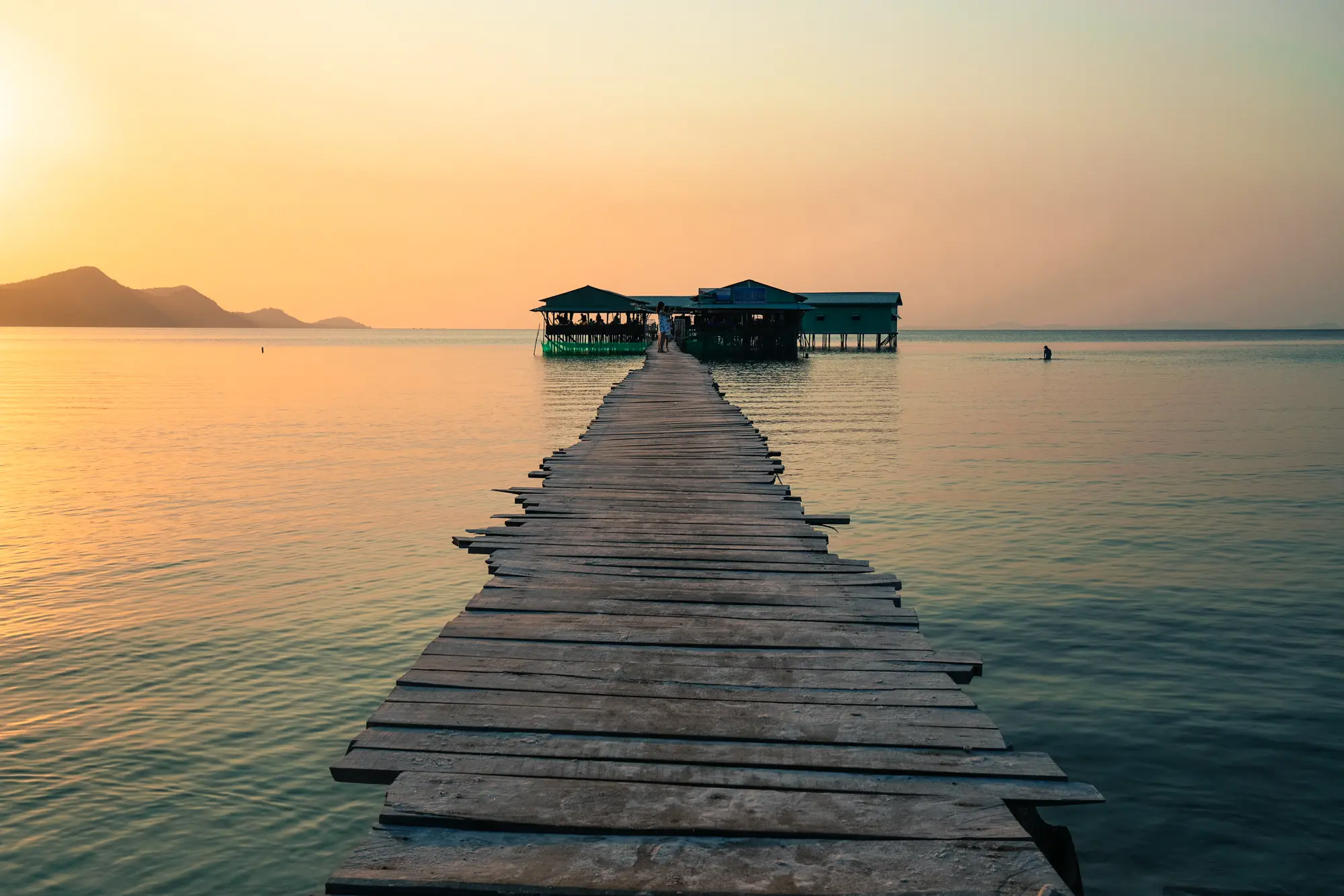
So while the islands are rather comparable photographically, a slight edge here goes to Phu Quoc, due to its abundance of quality street photo ops.
And there you have it – Phuket and Phu Quoc compared. Which island do you prefer to visit? Let me know!
